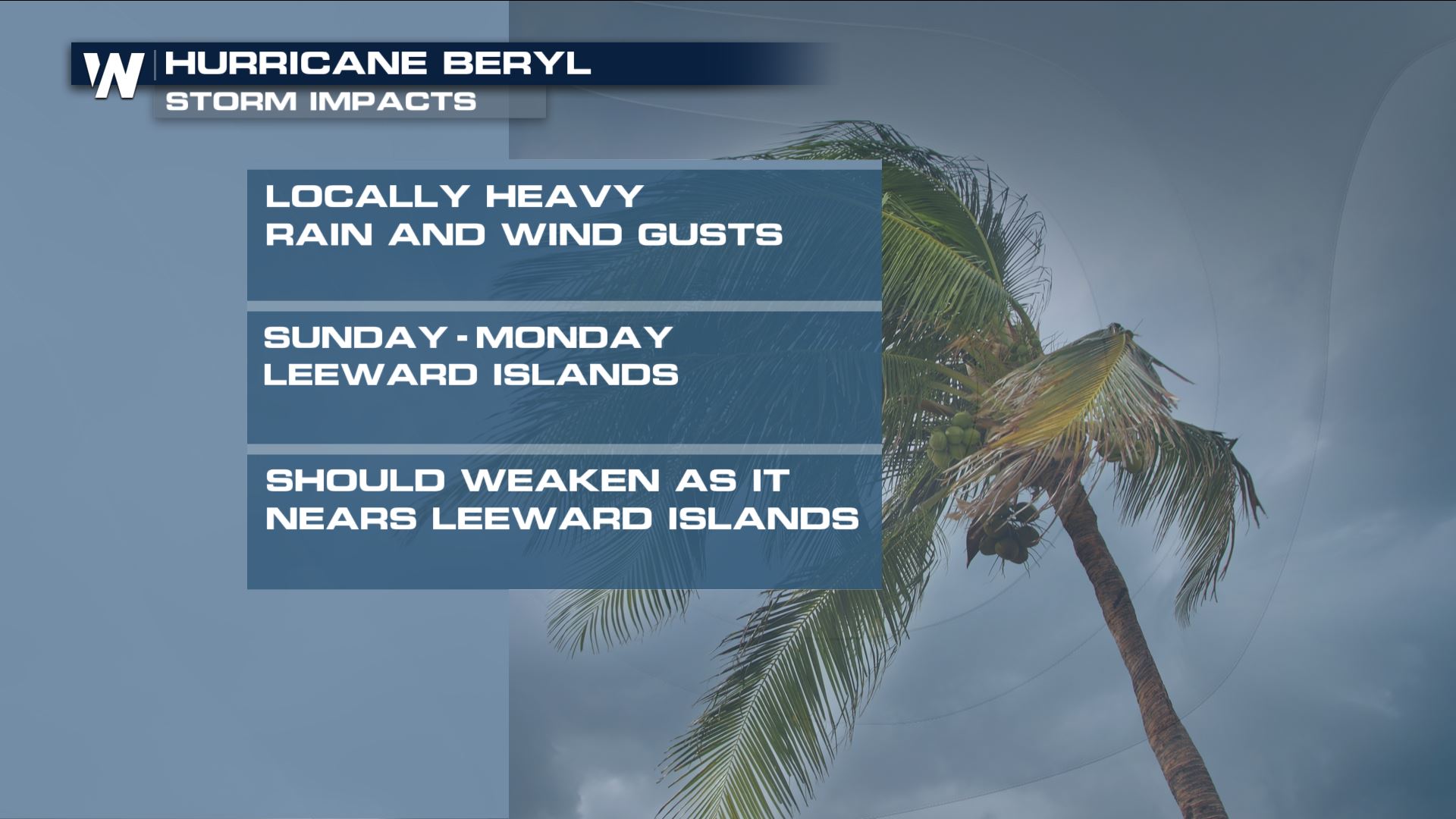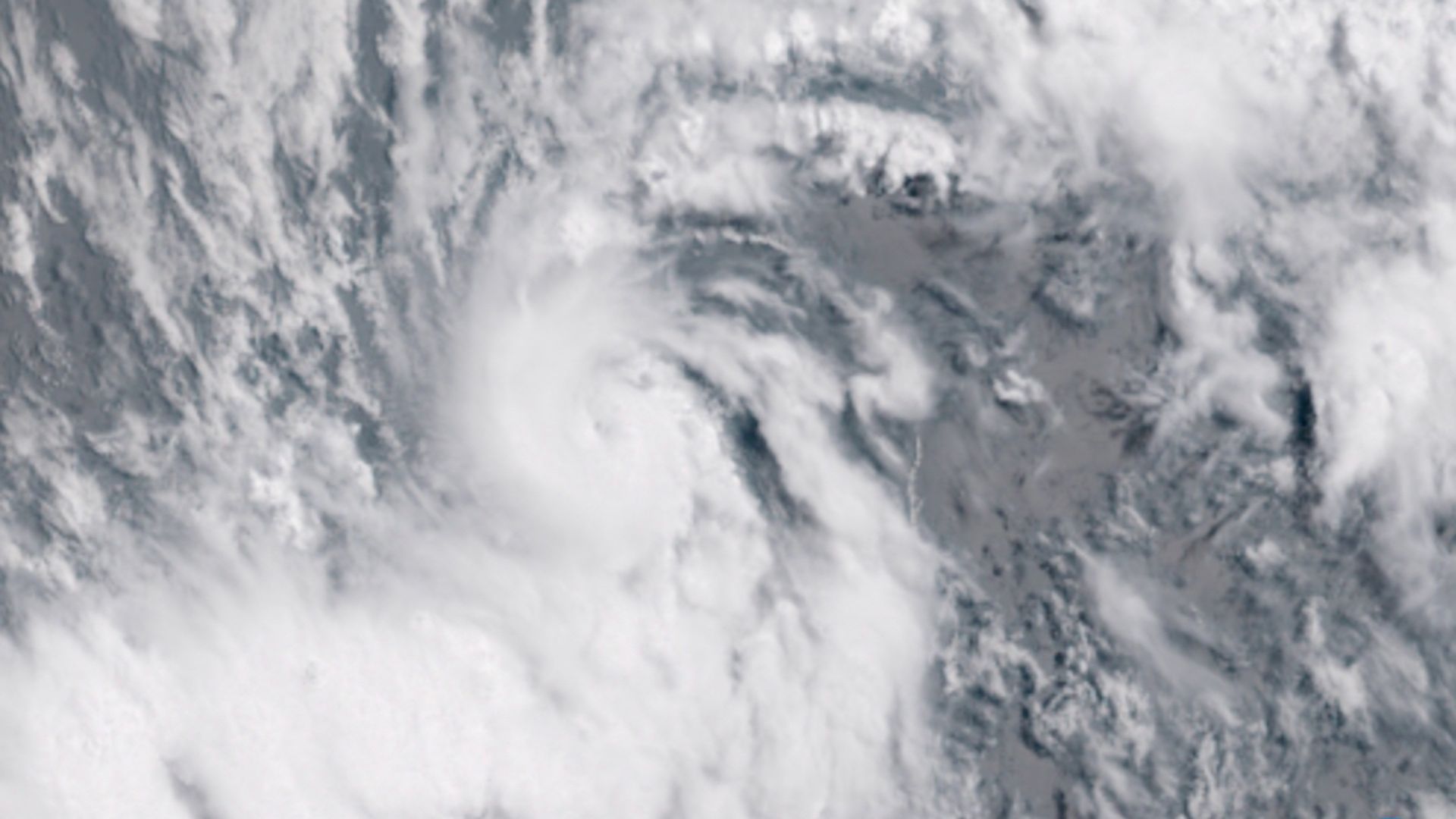Impact on Aruba: Hurricane Beryl Aruba

Hurricane beryl aruba – Hurricane Beryl made landfall in Aruba on August 22, 2023, bringing with it strong winds, heavy rainfall, and storm surge. The hurricane caused widespread damage to the island’s infrastructure, including buildings, roads, and utilities.
The strongest winds were felt in the southern part of the island, where gusts reached up to 120 miles per hour. These winds caused significant damage to buildings, with many roofs being torn off and windows being shattered. The storm surge also caused extensive damage to coastal areas, with many homes and businesses being flooded.
The heavy rainfall caused flooding throughout the island, with some areas receiving more than 10 inches of rain. This flooding caused damage to roads and bridges, and also led to mudslides in some areas.
The hurricane also caused widespread power outages, with more than 90% of the island losing power at some point. The power outages caused disruptions to businesses and schools, and also made it difficult for residents to stay informed about the hurricane and its aftermath.
Damage to Buildings
The hurricane caused significant damage to buildings throughout the island, with many homes and businesses being destroyed or damaged. The strongest winds were felt in the southern part of the island, where many buildings were completely destroyed.
- More than 1,000 homes were destroyed or damaged, with many roofs being torn off and windows being shattered.
- Many businesses were also damaged, with some being completely destroyed.
- The hurricane also caused damage to schools, hospitals, and other public buildings.
Damage to Roads and Bridges
The hurricane caused extensive damage to roads and bridges throughout the island. The heavy rainfall caused flooding, which washed out many roads and bridges.
- Several major roads were closed due to flooding or damage.
- Many bridges were also damaged, with some being completely destroyed.
- The damage to roads and bridges made it difficult for residents to travel around the island.
Damage to Utilities
The hurricane caused widespread damage to utilities, with more than 90% of the island losing power at some point. The power outages caused disruptions to businesses and schools, and also made it difficult for residents to stay informed about the hurricane and its aftermath.
The fury of Hurricane Beryl battered Aruba’s shores, leaving a trail of devastation in its wake. Yet, as the storm raged towards Florida, a flicker of hope emerged from the darkness. News of a relief fund established in Florida ( hurricane beryl florida ) ignited a sense of solidarity.
The people of Aruba, though weary from the storm’s wrath, found solace in knowing that their neighbors stood ready to extend a helping hand, reminding them that even in the face of adversity, humanity’s compassion could prevail.
- More than 100,000 people lost power during the hurricane.
- The power outages lasted for several days in some areas.
- The damage to utilities also caused disruptions to water and sewage services.
Economic Consequences
Hurricane Beryl brought severe economic repercussions to Aruba’s tourism industry, a vital sector for the island’s economy. The storm’s destructive force damaged critical tourism infrastructure, resulting in a significant loss of revenue and disruption to local businesses.
As Hurricane Beryl’s relentless winds lashed against Aruba, I couldn’t help but be reminded of the unwavering determination of basketball star Eric Gordon. His stats speak volumes of his resilience and unwavering spirit, qualities that mirrored the resilience of the Aruban people as they weathered the storm’s fury.
Just as Gordon overcame adversity on the court, Aruba would emerge from this natural onslaught stronger and more united.
Loss of Revenue
- Hotel closures and cancellations led to a sharp decline in tourism revenue, affecting both large resorts and smaller guesthouses.
- Cruise ship arrivals were suspended, causing a loss of income from cruise passengers and associated activities.
- Tours and excursions were canceled, depriving tour operators and local guides of income.
Damage to Tourism Infrastructure
- Beaches were eroded, damaging beach bars, restaurants, and other amenities.
- Hotels and resorts suffered structural damage, requiring costly repairs and renovations.
- Airports and roads were temporarily closed, hindering access to the island and disrupting tourism operations.
Impact on Local Businesses and Employment
The economic fallout extended beyond the tourism industry, affecting local businesses and employment:
- Restaurants, shops, and other businesses dependent on tourism revenue experienced a downturn.
- Employees in the tourism sector faced job losses or reduced hours due to the decline in business.
- Construction workers and contractors were hired to repair damaged infrastructure, providing some employment opportunities.
Emergency Response
As Hurricane Beryl approached Aruba, the island’s emergency response system swung into action. Local authorities, emergency services, and aid organizations worked tirelessly to ensure the safety and well-being of residents.
Evacuation Procedures
Early warnings and evacuation orders were issued, urging residents in vulnerable areas to seek shelter in designated evacuation centers. Transportation was provided to assist those unable to evacuate independently.
Provision of Shelter and Supplies
Evacuation centers were established throughout the island, providing temporary shelter, food, water, and medical assistance to those displaced by the hurricane. Aid organizations distributed essential supplies such as tarpaulins, blankets, and hygiene kits.
Coordination and Communication
Emergency responders worked closely with local authorities to coordinate response efforts. Communication channels were established to keep residents informed of the hurricane’s progress and provide updates on evacuation procedures and shelter availability.
Recovery and Rebuilding

In the aftermath of Hurricane Beryl, Aruba embarked on a comprehensive recovery and rebuilding process. The devastation left behind by the storm necessitated immediate action, and a collaborative effort was launched involving government agencies, aid organizations, and the local community.
Challenges and Progress
The recovery process was not without its challenges. Infrastructure had sustained significant damage, and essential services like electricity, water, and communication were disrupted. The tourism industry, a vital part of Aruba’s economy, was severely impacted, leading to job losses and a decline in revenue.
Despite these challenges, progress was made in restoring infrastructure and services. With the assistance of aid organizations, electricity was gradually restored, and water supply was reestablished. Temporary shelters were set up for those who had lost their homes, and efforts were made to provide food, water, and medical assistance to those in need.
Community Involvement
The local community played a crucial role in the recovery process. Volunteers from all walks of life came together to clear debris, distribute aid, and provide emotional support to those affected. This outpouring of community spirit helped to strengthen bonds and foster a sense of resilience.
Government and Aid Organizations
Government agencies and aid organizations coordinated their efforts to provide comprehensive support to the affected communities. The Aruban government allocated funds for rebuilding efforts, while aid organizations provided expertise and resources. International organizations like the United Nations and the Red Cross also provided assistance, delivering humanitarian aid and supporting long-term recovery initiatives.
Lessons Learned

Hurricane Beryl taught Aruba valuable lessons about disaster preparedness and response. These lessons will help the island strengthen its resilience and mitigate future risks.
One of the most important lessons learned is the importance of early warning systems. Hurricane Beryl formed quickly and intensified rapidly, leaving little time for residents to prepare. An improved early warning system would give residents more time to evacuate and take other protective measures.
Communication and Coordination, Hurricane beryl aruba
Another lesson learned is the importance of communication and coordination during a disaster. During Hurricane Beryl, there were some communication breakdowns between different agencies and organizations. This made it difficult to coordinate the response effort and provide timely assistance to those in need. Improved communication and coordination would help to ensure a more effective response to future disasters.
Community Preparedness
Finally, Hurricane Beryl highlighted the importance of community preparedness. Many residents were not prepared for the storm, and this led to unnecessary suffering and damage. By educating residents about hurricane preparedness and providing them with the resources they need to prepare, the island can reduce the impact of future storms.
